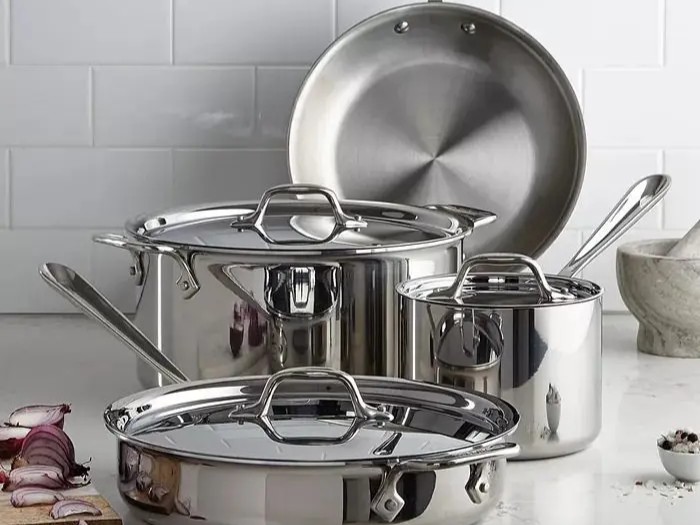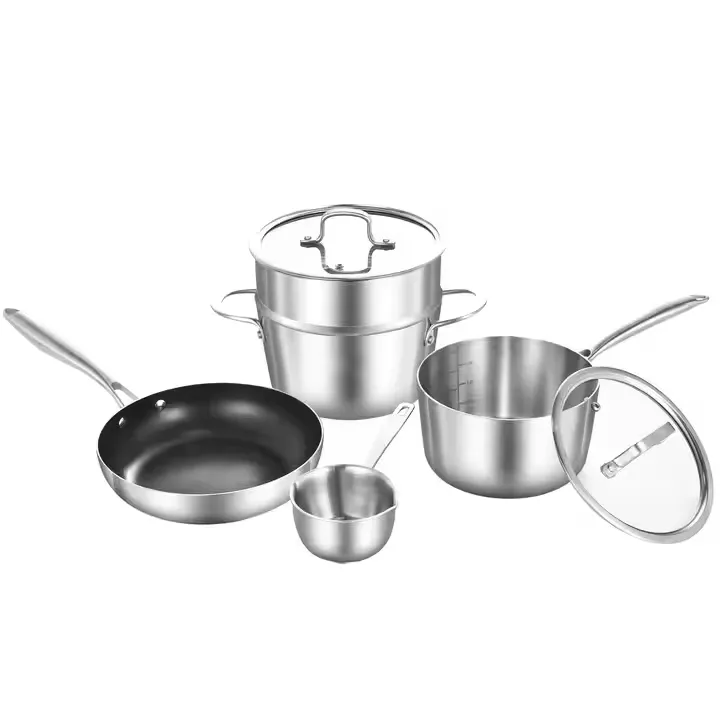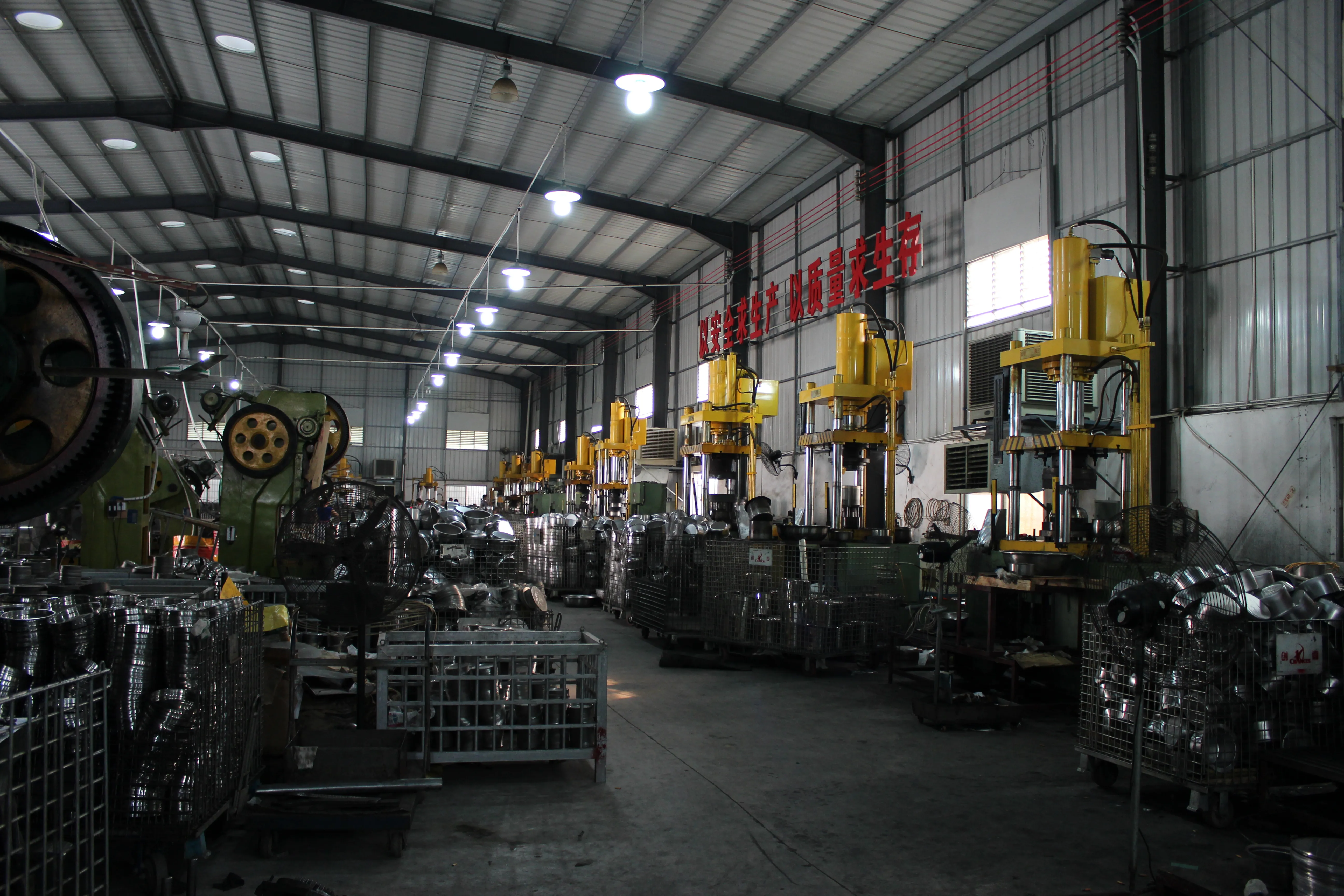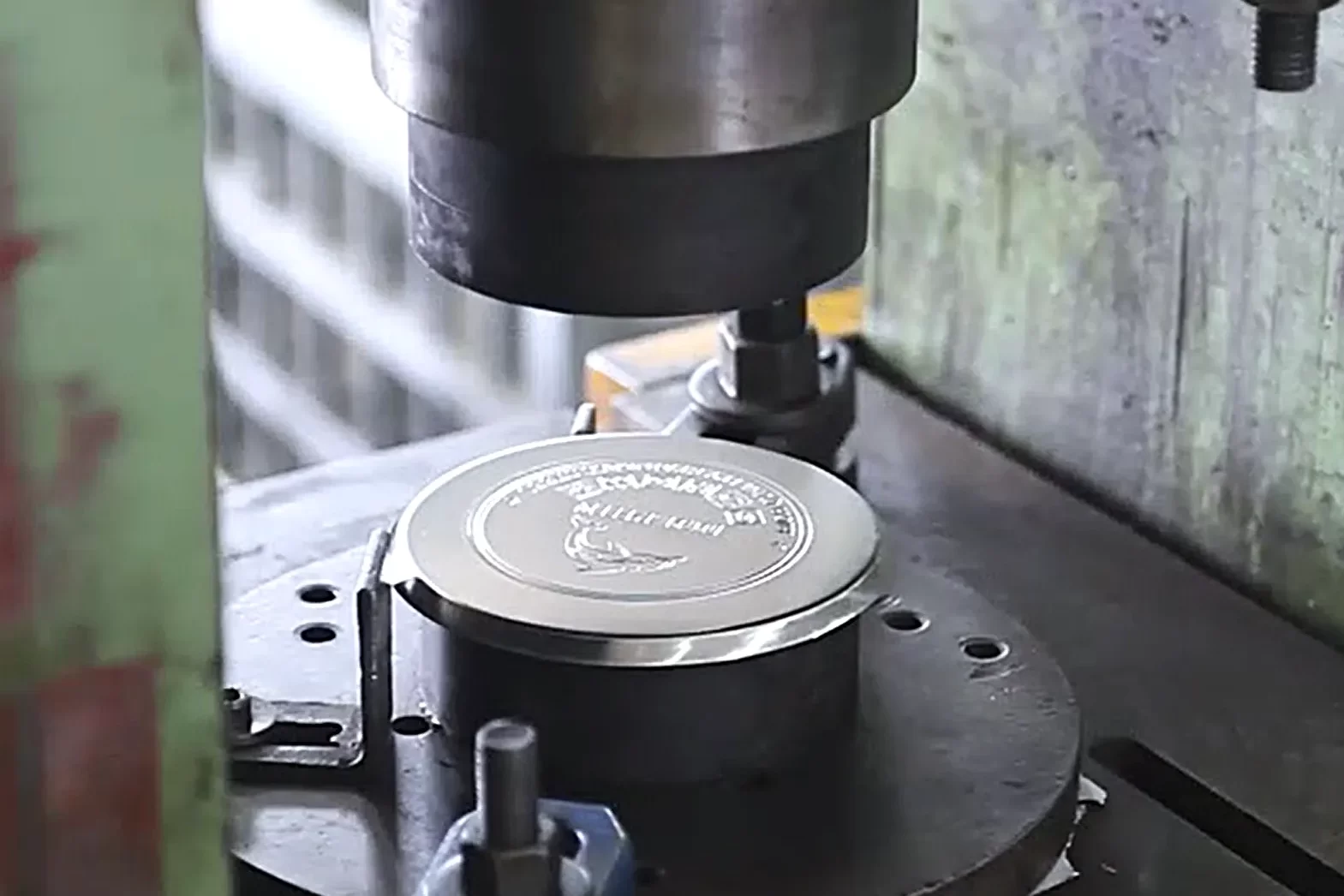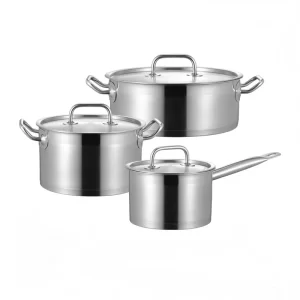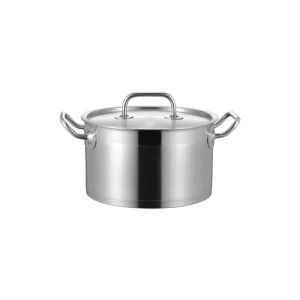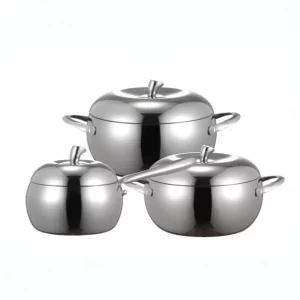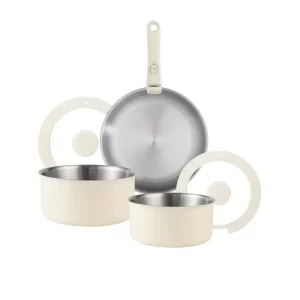In this era of heightened health awareness, people scrutinize ingredient lists for “no additives” when choosing food, yet often overlook a critical detail: the cookware health, which directly contact with food every day. Avoiding this may harbor hidden safety risks.
For decades, PTFE (commonly known by brand names like Teflon) non-stick pans have dominated kitchens for their “easy-to-clean and non-stick” benefits. However, after nearly 20 years in the stainless steel cookware manufacturing industry, we’ve heard countless customer complaints about “peeling coatings” and “strange odors after dry heating”
Behind these issues lie the invisible risks of PFAS and PTFE. As professionals deeply rooted in the cookware sector, Chancescook firmly believes that the first step to a healthy kitchen is becoming aware of cookware health and choosing materials that are “free of hidden toxins.” This guide avoids rigid chemical jargon; instead, it uses an insider’s perspective to help you understand the problem and explain why high-quality stainless steel is the dual-benefit solution for both “cooking safety” and “practicality.”
Inhaltsübersicht
Umschalten aufWhat Exactly Is PFAS? The “Invisible Residue Risk” in Insiders’ Eyes
When insiders talk about PFAS, they don’t just use the lengthy term “Per- and Polyfluoroalkyl Substances” – they emphasize its “persistence.” Our factory’s quality inspection team often tells clients that the nickname “forever chemicals” is well-deserved. Unlike spoiled food that decomposes, PFAS accumulates slowly in the environment and human bodies like “stubborn stains,” and it’s extremely difficult to metabolize.
- Don’t assume it’s far from your kitchen. Beyond being added to the coatings of some non-stick cookware (to enhance wear resistance and oil repellency), PFAS can also be found in oil-resistant food packaging and stain-resistant layers of cleaning sponges.
- The risks of long-term exposure are not just laboratory theories. A restaurant client told us that their kitchen staff, who previously used non-stick pans, occasionally suffered from coughing and chest tightness when stir-frying with air conditioners on in summer. After switching to stainless steel pans, these symptoms disappeared. It’s all about cookware health. Later, we learned that this is related to the potential of PFAS accumulation to impair immune function and disrupt metabolism – especially for kitchen staff who are in close, long-term contact with such cookware, the risks are higher than for home users.
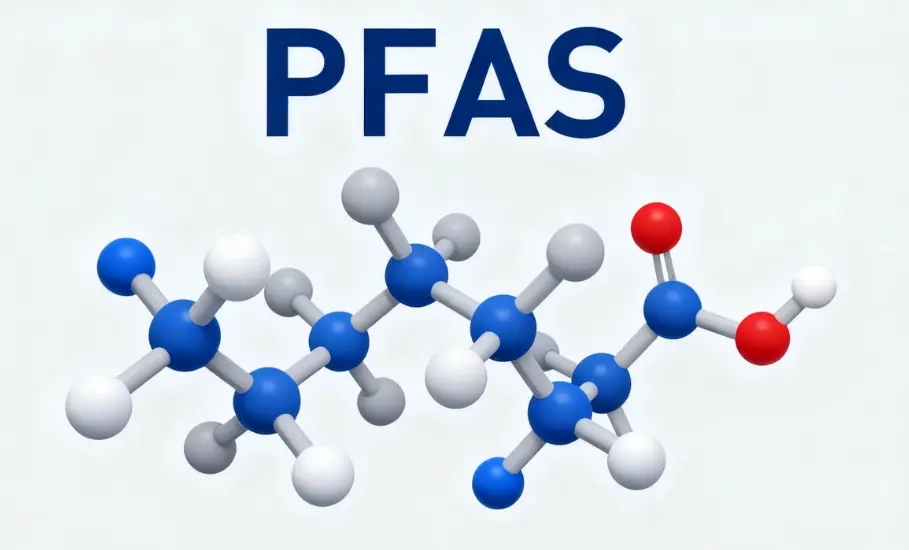
PTFE: The “Star” of Non-Stick Coatings – But Insiders Fear “Temperature Runaway“
Our factory has analyzed numerous PTFE (polytetrafluoroethylene) products during competitive research. While PTFE is stable at low temperatures (making it suitable for occasional egg-frying or noodles-cooking at home), the problem lies in “uncontrolled temperatures in real cooking scenarios” – the most common “failures” we’ve witnessed.
- Insiders all know that PTFE’s “cookware health safety threshold” is 260°C/500°F. However, in actual cooking, the temperature of an empty pan can exceed 300°C in just one minute: in busy hotel kitchens, chefs may forget to turn off the heat while preparing ingredients; home users who prefer “high-heat stir-frying” often let the local temperature of the pan bottom exceed the limit. Once overheated, PTFE decomposes and releases fumes. Our factory’s senior technicians have seen cases where kitchen staff from other companies developed fevers and coughs after inhaling these fumes – a condition diagnosed as “polymer fume fever.” This is not a minor issue; long-term exposure to such decomposition products poses more hidden risks to the respiratory system and bodily functions.
- A bigger hassle is the “short lifespan of PTFE coatings.” Our tests show that regular non-stick pans develop scratches after 3 months of use with metal spatulas; even with careful use of silicone spatulas, the coating gradually peels off after 1–2 years. Many clients don’t notice this until they find “small debris” in their pots, realizing they may have ingested the coating. This is also the core reason why we recommend uncoated stainless steel: it resists scratches, tolerates high heat, and fundamentally eliminates the risk of “accidental ingestion.”
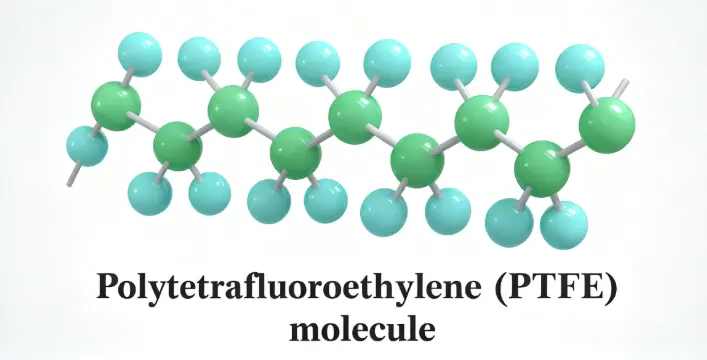
PFAS vs. PTFE: An Insider’s Quick Way to Tell Their “Subordinate Relationship”
Many clients confuse “PFAS-free” and “PTFE-free” when consulting us for the first time, even assuming that “avoiding Teflon means safety.” However, in the eyes of industry insiders, they have a “family-to-member” relationship, with entirely different risk points. It’s crucial to distinguish between them when making a purchase while ensuring cookware health:
| Faktor | PFAS | PTFE |
| How Insiders Define It | A “persistent chemical family” (including thousands of substances) | A “specific member” of the PFAS family, focused on non-stick functionality |
| Actual Use in Cookware | Secretly added to non-stick coatings to “enhance durability” or hidden in packaging | The “core raw material” of non-stick coatings, enabling the “non-stick” effect |
| Risks Insiders Fear More | Long-term accumulation in the body with no easy metabolism (equivalent to “chronic buildup”) | Toxic fume release when overheated (a form of “acute risk”) |
In short: Don’t be relieved just because a product claims to be “PTFE-free” – it may still contain other PFAS. Only “PFAS-free” means truly “no such chemicals at all.” This is our “gold standard” for selecting kitchenware and building a cookware health threshold for clients, and a mission that is good for our global customers.
“PFAS-Free” vs. “PTFE-Free”: Don’t Be Tricked by Labels! An Insider’s Guide to Avoiding Pitfalls
During exchanges with buyers at the Canton Fair, we’ve found that many people have fallen into the “label trap”: they think buying a “Teflon-free” pan means safety, only to find it’s ceramic-coated and peeling after six months. This essentially stems from failing to understand the fundamental difference between the two labels.
- “PTFE-free”: Only means the pan contains no Teflon, not that it’s free of other PFAS. For example, some manufacturers add PFAS to popular “ceramic non-stick coatings” to improve wear resistance. We once disassembled a competing product that claimed to be “PTFE-free,” only to find it contained perfluorooctanoic acid (a type of PFAS) – a typical case of “evading the key issue.”
- “PFAS-free”: This is the true “zero-risk” claim – it means no PFAS substances (including PTFE) are used, from materials to production processes.
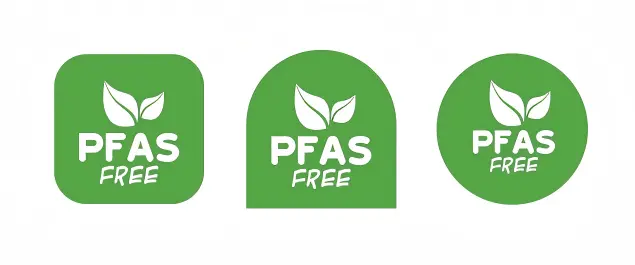
Alternatives for Cookware Health: Why Stainless Steel Is Insiders’ Top Choice? (With Material Comparisons + Real Cooking Tips)
Many people think “saying goodbye to non-stick means accepting sticking and difficult cleaning,” but this is due to choosing the wrong materials and lacking proper techniques. We’ve compared three mainstream materials – cast iron, ceramic coating, and stainless steel – from factory production to client feedback. Stainless steel is the only one that balances “safety, durability, and practicality.” Below, we use insider experience to explain why.
Compare with Other Materials: What Makes Stainless Steel Irreplaceable?
Stainless steel is irreplaceable because it is coating-free, inherently safe, extremely durable, compatible with all stoves, and offers the best long-term cost-effectiveness without requiring seasoning.
| Material | Safety Risks | Dauerhaftigkeit | Practicality | Insider Evaluation |
| Cast Iron Pans | No chemical coating, but prone to rust (rust may seep into food); requires regular “seasoning” (oiling to prevent rust) | Durable (can last over 10 years) but heavy (3–5 lbs per pan, making it hard for women to toss) | Only suitable for gas stoves (not induction cooktops); prone to sticking (especially for beginners who haven’t seasoned properly) | “Suitable for experienced cooking enthusiasts, but not for commercial kitchens (chefs can’t handle the weight) or ‘lazy’ households” |
| Ceramic-Coated Pans | Some contain PFAS; thin coating (0.1–0.2mm) prone to scratching (even with silicone spatulas) | Poor (coating peels off after 6–12 months of normal use) | Compatible with all stoves but cannot be dry-heated (coating cracks); must be discarded once coating peels | “A transitional choice for short-term use, but more expensive than stainless steel in the long run (needing replacement every year)” |
| 304/316 Stainless Steel Pans | No coating; inherently safe (meets food-grade standards); nickel-free options available (for allergy sufferers) | Extremely high (among our factory clients, some restaurants have used the same pans for 8 years; home use can exceed 10 years) | Compatible with all stoves (gas, electric, induction); can go directly from stovetop to oven (heat-resistant above 500°C) | “A ‘versatile option’ for both commercial and home kitchens – no seasoning needed, scratch-resistant, stove-compatible, and most cost-effective for long-term use” |
Insider Cooking Tips: How to Use Stainless Steel Pans to Avoid Sticking?
Many clients complain that “stainless steel pans stick more than cast iron ones” when using them for the first time. This is actually due to failing to master the key step of “preheating” – our factory’s senior technicians taught us a “water drop test” that’s proven effective:
- Don’t rush preheating: Turn on low to medium heat and heat the pan for 1–2 minutes. Then drop a single water droplet onto the pan bottom. If the droplet evaporates immediately, the temperature is too low; if it rolls around the bottom like a “small bead” (even bouncing slightly), it’s time to add oil. Once the oil is hot, add ingredients – they will never stick. We’ve tested this with scrambled eggs and pan-fried fish, and both can be flipped intact.
- Don’t fear “high heat,” but avoid “dry heating”: Stainless steel is heat-resistant, making it ideal for high-heat stir-frying (e.g., for leafy greens or steak) – it locks in food moisture better than non-stick pans. However, never dry-heat the pan. While it won’t release toxic substances, prolonged dry heating discolors the pan bottom (affecting appearance, not safety) and makes cleaning harder.
- Cleaning tricks: Don’t wash the pan with cold water immediately after cooking (thermal expansion and contraction can deform the pan). Instead, soak it in warm water for 5 minutes – oil stains rinse off easily. For burnt-on residue, avoid steel wool (it scratches the surface, making sticking more likely); use a sponge dipped in baking soda to wipe it clean effortlessly. The kitchens of our restaurant clients use stainless steel pans to cook dozens of dishes daily – with this cleaning method, the pans stay shiny even after years of use.
To avoid sticking, always preheat the pan over medium heat until a water droplet “dances” or “beads” on the surface; then add oil and ingredients.
Safe Cooking Tips: An Insider’s “Pitfall-Avoidance Guide” for Cookware Health
Whether you currently use non-stick pans or plan to switch to stainless steel, these tips are summarized from client feedback to help you avoid 90% of safety issues:
- For non-stick pans: Don’t believe claims that “metal spatulas are safe to use.”
We’ve disassembled many “scratch-resistant” models, and even they develop scratches after 3 uses of metal spatulas – the coating hidden in scratches peels more easily. Additionally, don’t soak the pan in cold water right after cooking (temperature differences cause the coating to crack); let it cool before washing. If you notice “peeling” or “debris” on the coating – even just a little – stop using it. We once had a client who hesitated to discard a peeling pan, only to find small debris in their child’s food. They switched to stainless steel pans immediately afterward. - For stainless steel pans: Don’t just look for the “304” label when buying.
Insiders check the “brushing process” (a more uniform surface resists sticking better) and “welds” (no burrs or gaps mean no hidden dirt). If someone in your family is allergic to nickel, choose “304L nickel-free stainless steel” (we’ve made many custom models for European clients with allergy needs). Also, avoid storing acidic foods (e.g., vinegar, tomato sauce) in stainless steel pans for long periods – while the material is safe, prolonged storage can discolor the pan.
Why Choose Chancescook as Your Stainless Steel Cookware Supplier? (Genuine Client Feedback Speaks Loudest)
We’ve been making stainless steel cookware for 20 years – we don’t just sell “pots and pans”; we solve clients’ needs for “safety, practicality, and customization.” Over the years, feedback from our clients has been more persuasive than any praise we could give ourselves:
【OEM/ODM Customization: Solving “Local Market Needs” for Clients】Last year, an Australian client needed a batch of stainless steel frying pans suitable for induction cooktops, with “heat-resistant wooden handles” (preferred by local consumers). Our engineers adjusted the pan bottom thickness (for more even heat conduction) and collaborated with a partner wood factory to customize the handles. When the products launched in local supermarkets, they sold out within 3 months. This is our strength: we don’t just offer off-the-shelf products; we create “products tailored to your market.”
【Strict Quality Control: Every Pan Passes 5 Inspections】We have a “long-standing rule” in our factory: every batch of stainless steel pans undergoes 5 inspections – raw materials are tested for “food-grade compliance” (to avoid recycled steel), pans are checked for “deformation,” welds are inspected for “burrs,” polished surfaces are evaluated for “uniformity,” and final “heat resistance tests” (30 minutes of dry heating to ensure safety). Once, a batch had minor polishing defects, so we reworked the entire lot – even though it delayed delivery by a few days, the client said, “We’ll only work with you because of this commitment to quality.”
【Client Case: From “Skepticism” to “Long-Term Partnership”】A U.S. restaurant chain client initially thought “stainless steel pans are too expensive” and used ceramic-coated pans instead. However, they had to replace 3 batches of ceramic pans in 6 months (due to peeling coatings). After testing our stainless steel pans, they’ve been our partner for 3 years and even recommended us to other chain brands. Their purchasing manager said, “While stainless steel pans cost more upfront, we don’t need frequent replacements, and kitchen cleaning is faster – it saves money in the long run.”
【Sustainability: Safe for You, and for the Planet】Our stainless steel pans are 100% recyclable. Last year, a European client specifically asked for our “recycling plan,” noting that their consumers care deeply about “product life cycles.” Additionally, we collect scrap metal during production for re-smelting, reducing waste. After all, a healthy kitchen should be safe for both people and the environment.
Ready to Build a Safer Kitchen? Choose Chancescook
Your demand for “additive-free” food shouldn’t stop at the ingredients themselves – the cookware that touches your food daily deserves to be “risk-free.” Saying goodbye to the hidden risks of PFAS and PTFE and choosing stainless steel is not a “compromise”; it’s a “long-term investment in health.” Stainless steel pans won’t peel, won’t release toxic substances, and will accompany you through a decade of home cooking or withstand the daily hustle of restaurant kitchens.
Als stainless steel cookware suppliers (kochgeschirr hersteller) with 20 years of industry experience, Chancescook understands your needs: whether you’re looking to create Eigenmarken-Kochgeschirr (requiring cookware OEM customization) or source for restaurant procurement (requiring wholesale pricing), we can help you achieve your goals.
Ready to start your “safe cooking” journey? Contact us today – we can send you samples (so you can experience the quality of stainless steel firsthand) or provide detailed test reports (food-grade certifications). Your healthy kitchen starts with choosing the right pan.

